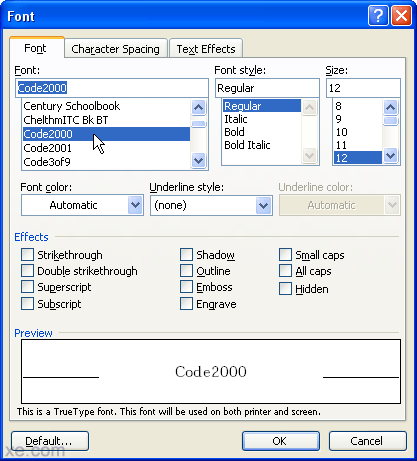Also, comparing prices will help you make a choice that fits your budget. However, after the Enclosures Act (which was first introduced in 1604), the definition was legally changed. This is what the cotter would use to grow their food and rear their livestock. It was one of the key residential rights that separated them from peasants.
- Finally, bungalows are often built with natural materials and are characterized by a rustic charm, so that they are in harmony with their natural surroundings.
- Part of the reason why there’s not much variation is that the definition of cottage is so broad.
- Also, because they have a second-storey, their footprint is significantly smaller than that of a bungalow.
- By extension, a cottage can be detached, semi-detached, or a terrace.
- Because the basement is not that deep, and the ground must slope downwards away from the building, the slope of the driveway is quite shallow.
In a separate usage, the dak bungalows formerly used by the British mail service have been adapted for use as centers of local government or as rural hostels. Oddly, however, the dark, stiff, formality of the villa is often loved by those who purport to despise the conventional. And then they go out and spend millions buying houses that place an Edwardian straitjacket of formality on daily life – and spend hours writing District Plans enforcing their preservation. This website is using a security service to protect itself from online attacks. There are several actions that could trigger this block including submitting a certain word or phrase, a SQL command or malformed data.
What is the difference between a Villa, Bungalow, and Duplex apartment?
Like many other local houses, Chicago bungalows are relatively narrow,[23] being an average of 20 feet (6.1 m) wide on a standard 24-foot (7.3 m) or 25-foot (7.6 m) wide city lot. Their veranda (porch) may either be open or partially enclosed (if enclosed, it may further be used to extend the interior rooms). Let’s start with the difference between villa and duplex apartments. These apartments have two-storeys, specially designed for single families, as they only have a single kitchen and dining area. Duplex apartments are typically built in apartment buildings, whereas villas are built on the ground level. Villa and bungalow are two examples of houses designed and positioned in different architectural styles.
In the 19th and 20th centuries, terraced cottages were common as housing for workers. However, there’s no clear evidence that Bengali homes were actually the inspiration for the original bungalow design. The California bungalow was a widely popular 1+1⁄2-story variation on the bungalow in the United States from 1910 to 1925. It was also widely popular in Australia within the period 1910–1940.
- First- and second-generation Jewish-American families were especially likely to rent such houses.
- Intertwined with the garden, these houses are ideal for those looking for a quiet life in natural surroundings.
- Since Turkish bungalow houses are usually located in quiet and isolated areas, it is important to learn about security measures.
- Construction of this type of bungalow peaked towards the end of the decade, to be replaced by brick construction.
A bungalow was a prefabricated single-story building used as a seaside holiday home. Construction of this type of bungalow peaked towards the end of the decade, to be replaced by brick construction. The bungalow is the most common type of house built in the Irish countryside. Often these plots were large, so a one-story bungalow was quite practical, particularly for retirees.
Another major difference is that villas promote a sense of community since they are generally constructed within a gated community. On the other hand, a bungalow also may or may not have amenities. But villas are usually packed with modern private amenities like a swimming pool, gym, walk-in closets, innovative kitchens, and much more. Bungalow homes are usually located in areas surrounded by natural beauty. If you are looking for a life in nature, it is important to choose a quiet location. Bungalows near the sea, in forested areas, or on the foothills allow for a tranquil lifestyle.
SEARCH KEYWORD
You’ll even be able to drop some cottage and bungalow facts on them. Part of the reason why there’s not much variation is that the definition of cottage is so broad. After all, it’s quite difficult to say one cottage is a certain style while another one is different if your only real decider is that it’s small.
In the UK, the term cottage is often used as a romantic descriptor of a small, rural property that looks fairly quaint. Cottages can trace their origin back to the medieval period, when they were homes for cotters. A cotter was a semi-independent peasant who lived on owned lands but had certain rights that put them above ‘regular’ peasants. By extension, a cottage can be detached, semi-detached, or a terrace.
Differences Between Cottages and Bungalows
On the other hand, even closely spaced bungalows make for quite low-density neighborhoods, contributing to urban sprawl. In Australia, bungalows have broad verandas to shade the interior from intense sun. But as a result they are often excessively dark inside, requiring artificial light even in daytime. The difference between a house and a bungalow stems from their structure and style. A bungalow, on the other hand, is a low-rise house, usually one story or slightly smaller. A bungalow traditionally has a large veranda or terrace and often integrates more organically with the natural environment.
The first overwater bungalows were constructed on the French Polynesian island of Ra’iātea in 1967 by three American hotel owners, Jay Carlisle, Donald McCallum and Hugh Kelley. A cottage is defined in English law as a small residential property that doesn’t have land. In Scotland, the equivalent term is a croft, and in Welsh, it’s bwthyn.
Chicago bungalow
A Welsh cottage (bwthyn) could be built using a folkloric tradition called Ty unnos, which translates to ‘house in the night’. Cottages can be tiled or thatched depending on their age and design. A thatched building will almost always be a cottage and is arguably the textbook definition of cottage. There aren’t many 19th-century bungalows left because they weren’t built with the kind of construction techniques that last. As a general rule, bungalows you’ll see across the UK will have been built in the 20th century.
Even so, it’s common for the terms cottage and bungalow to be used interchangeably. A ranch bungalow is a bungalow organized so that bedrooms are on one side and “public” areas (kitchen, living/dining/family rooms) are on the other side. If there is an attached garage, the garage is on the public side of the building so that a direct entrance is possible, when this is allowed by legislation. On narrower lots, public areas are at the front of the building and such an organization is typically not called a “ranch bungalow”.
One example that’s believed to be a one-night house is Ty Hyll in Snowdonia. Cottages, however, have a much more interesting definition of land. Until the Tudor period, a cottage could only be a cottage if it had at least 4 acres of land within its property boundary. In fact, changes in design are so clear cut that we can age bungalows just by looking at them.
Fairmont Princess looks to add jewels to crown City News … – scottsdale.org
Fairmont Princess looks to add jewels to crown City News ….
Posted: Mon, 31 Jul 2023 07:00:00 GMT [source]
The building is marketed as a bungalow with loft because the main living areas of the house are on one floor. All the convenience of single-floor living still applies and the loft is not expected to be accessed on a daily basis. Real estate can be tricky sometimes if you’re not familiar with it. However, understanding basic real estate terminologies becomes the need of the hour, especially if you’re looking for luxury homes. Clearing up the jargon will not only help you choose the best kind of property but also allow you to plan your finances and home loan efficiently. The overwater bungalow is a form of, mainly high end, tourist accommodation inspired by the traditional stilt houses of South Asia and the Pacific.
Bungalow Villa Rumba
A bungalow is well suited to persons with impaired mobility, such as the elderly or those in wheelchairs. There are no such restrictions when it comes to bungalows, as they are generally constructed on a piece of land that you own. This customisability allows you to extend or completely change the structure of your property, which is not the case with villas. Buying a bungalow is a beautiful way to experience a peaceful life surrounded by nature. However, deciding by considering the factors mentioned above will help you choose the most suitable Turkish bungalow houses for you. So, next time you’re out travelling around the UK, make sure you correct anyone who uses the term cottage (or bungalow) incorrectly!
Therefore, a bungalow can be a cottage in that it’s small, similar to a lodge, but it must be a single-storey cottage. It’s not uncommon for a bungalow to have a second storey thanks to a loft conversion. However, to remain a bungalow, it must keep its sloping difference between bungalow and villa roof, which necessitates dormer windows. They had wanted to attract tourists to Ra’iātea, and to their hotel, but the island had no real beaches and so to overcome this handicap they decided to build hotel rooms directly on the water using large wooden poles.




